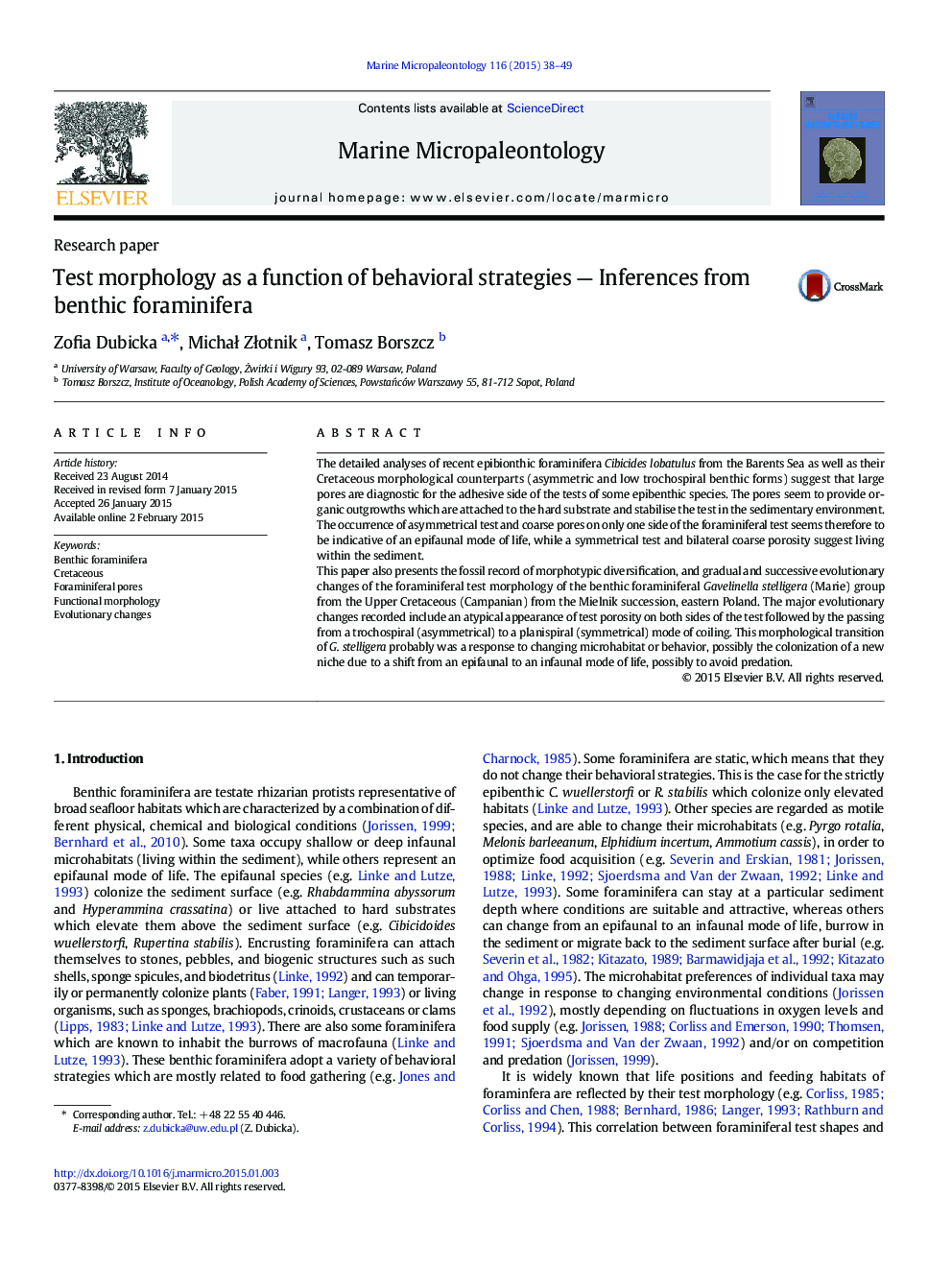| Article ID | Journal | Published Year | Pages | File Type |
|---|---|---|---|---|
| 4748793 | Marine Micropaleontology | 2015 | 12 Pages |
•The adhesive function of large pores in tests of benthic foraminifera is postulated.•The evolution of test morphology and pore patterns is presented.•The evolution of test morphology reflects microhabitat changes.
The detailed analyses of recent epibionthic foraminifera Cibicides lobatulus from the Barents Sea as well as their Cretaceous morphological counterparts (asymmetric and low trochospiral benthic forms) suggest that large pores are diagnostic for the adhesive side of the tests of some epibenthic species. The pores seem to provide organic outgrowths which are attached to the hard substrate and stabilise the test in the sedimentary environment. The occurrence of asymmetrical test and coarse pores on only one side of the foraminiferal test seems therefore to be indicative of an epifaunal mode of life, while a symmetrical test and bilateral coarse porosity suggest living within the sediment.This paper also presents the fossil record of morphotypic diversification, and gradual and successive evolutionary changes of the foraminiferal test morphology of the benthic foraminiferal Gavelinella stelligera (Marie) group from the Upper Cretaceous (Campanian) from the Mielnik succession, eastern Poland. The major evolutionary changes recorded include an atypical appearance of test porosity on both sides of the test followed by the passing from a trochospiral (asymmetrical) to a planispiral (symmetrical) mode of coiling. This morphological transition of G. stelligera probably was a response to changing microhabitat or behavior, possibly the colonization of a new niche due to a shift from an epifaunal to an infaunal mode of life, possibly to avoid predation.
